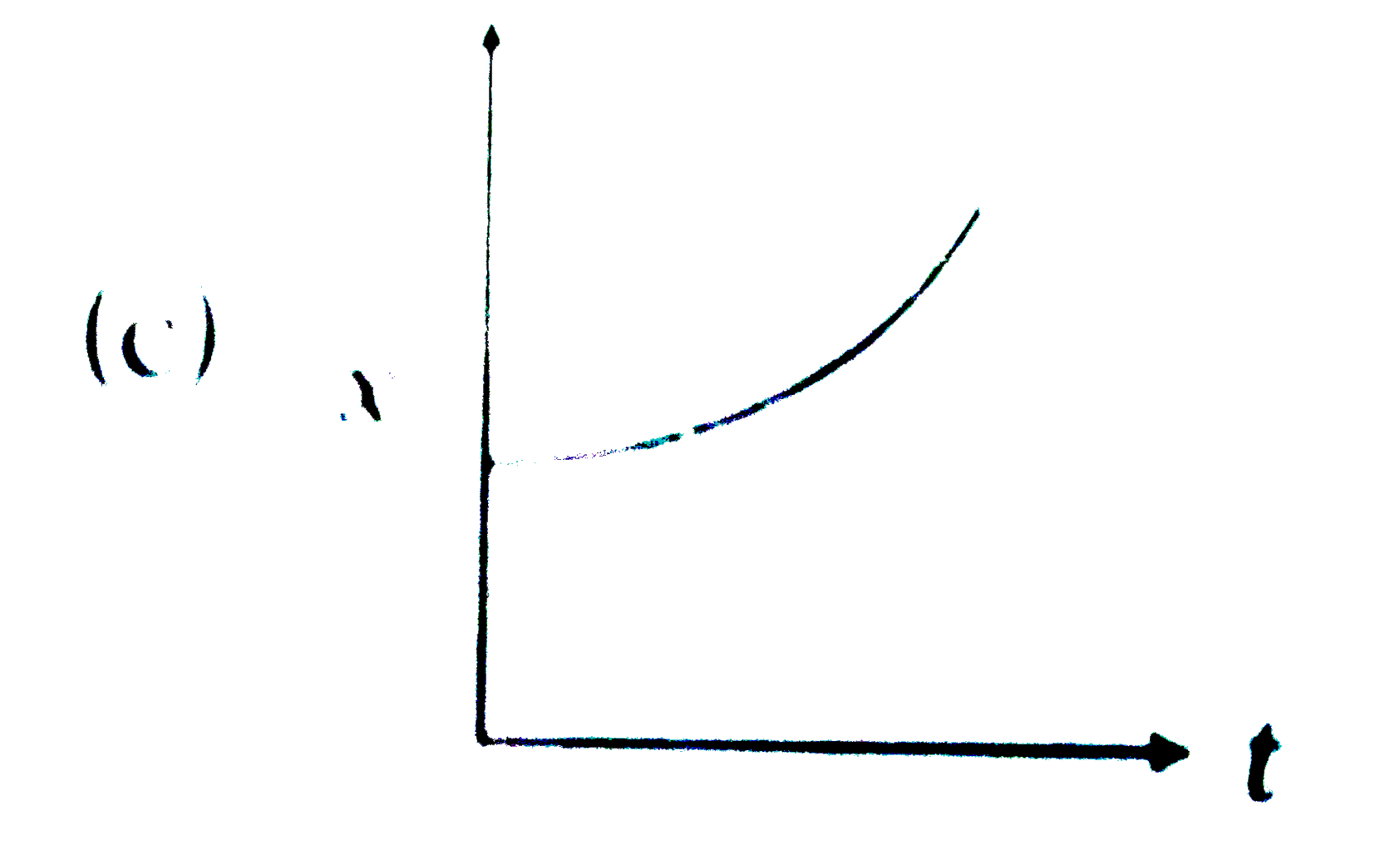The displacement x of a particle in a straight line motion is given by x=1−t−t2. The correct representation of the motion is
A

B

C

D

Video Solution
Text Solution
The correct Answer is:B
dxdt=υ=1−2t
Comparing with υ=u+at, we have, u=−1ms−1 and
a=−2ms−2
At t = 0, x = 1m. Then, u and a both are negative. Hence, x-coordinate of particle will go on decreasing.
|
Topper's Solved these Questions
- MOTION IN A PLANEBook:DC PANDEYChapter:MOTION IN A PLANEExercise:(B) Meical entrance special format questions (Assertion and reason)
Explore 19 Videos
- MOTION IN A PLANEBook:DC PANDEYChapter:MOTION IN A PLANEExercise:(B) Meical entrance special format questions (Mathch the columns)
Explore 6 Videos
- MOTION IN A PLANEBook:DC PANDEYChapter:MOTION IN A PLANEExercise:Check point 3.7
Explore 15 Videos
- MOTIONBook:DC PANDEYChapter:MOTIONExercise:Medical entrances gallery
Explore 19 Videos
- PROJECTILE MOTIONBook:DC PANDEYChapter:PROJECTILE MOTIONExercise:Level - 2 Subjective
Explore 10 Videos
Similar Questions
Knowledge Check
The displacement x of a particle along a straight line at time t is given by x=a0+a1t+a2t2. The acceleration of the particle is
Aa0Ba1C2a2Da2The displacement x of a particle at time t along a straight line is given by x=α−βt+γt2. The acceleraion of the particle is
A−βB−β+2γC2γD−2γThe displacement 'x' of a particle moving along a straight line at time t is given by x=a0+a1t+a2t2. The acceleration of the particle is :-
Aa1Ba2C2a2D3a2
The motion of a particle in straight line is an example of
View SolutionThe displacement of a particle moving in a straight line, is given by s=2t2+2t+4 where s is in metres and t in seconds. The acceleration of the particle is.
View SolutionThe displacement of a particle is given by x=cos2ωt. The motion is
View SolutionThe displacement x of a particle in motion is given in terms of time by x(x−4)=1−5cosωt
View SolutionThe displacement (x) of a particle as a function of time (t) is given by
x=asin(bt+c)
Where a,b and c are constant of motion. Choose the correct statemetns from the following.
View Solution

